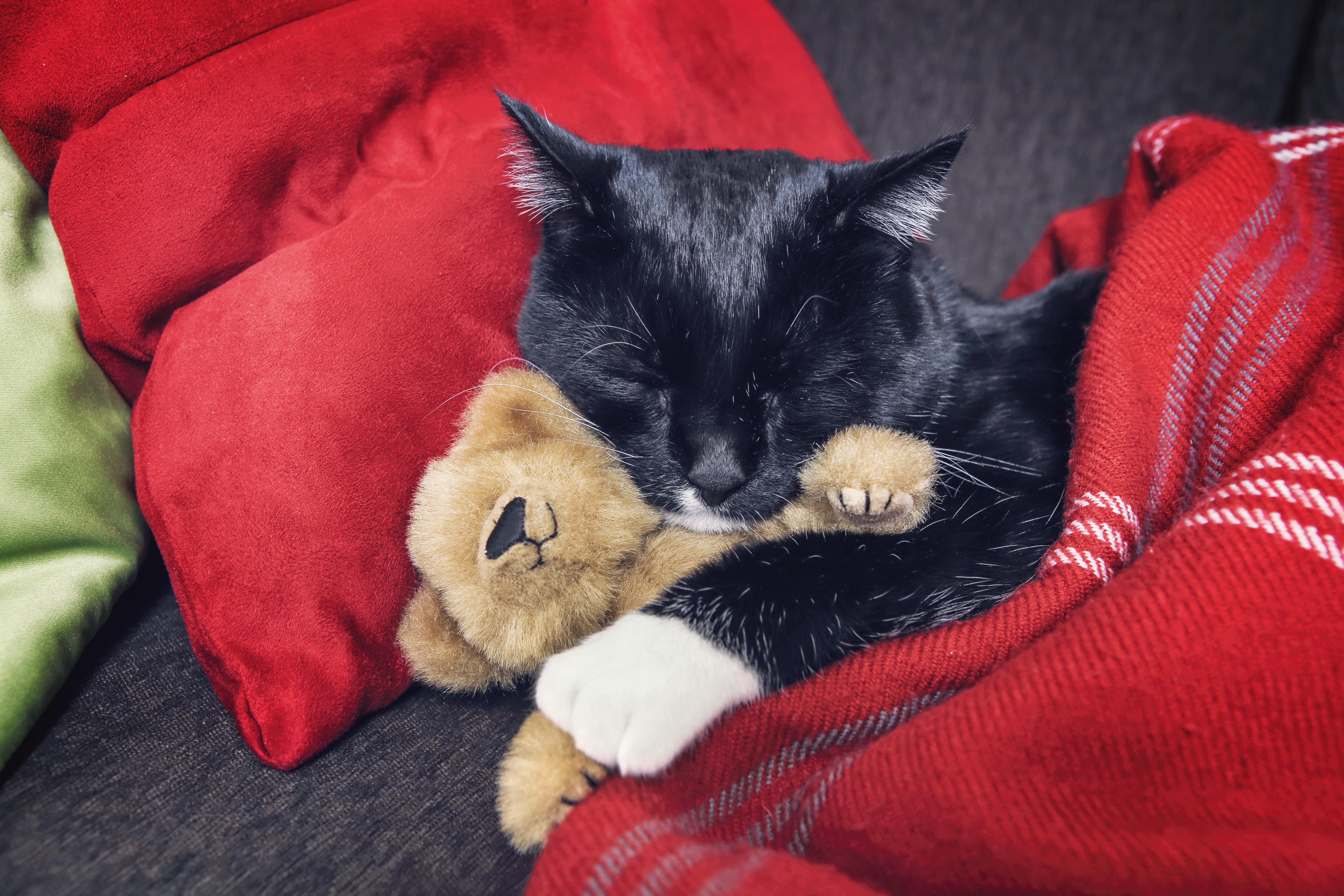There are all sorts of ways to help make your space more comfortable this time of year. After all, this is the season for cuddling up with hot cocoa! If you’re concerned about climbing energy bills, fear not. Keeping cozy all through the winter relies on a lot more than just your thermostat settings.
1. Winter Home Energy Efficiency
Of course, having a good furnace or heat pump is crucial this time of year. (Be sure to call us at 317-238-3961 if you need a hand!) But even if all of that equipment is working fine, you can still make your home a little more snug with one of these energy-saving wintertime tips. A quick home improvement project can make a big difference to boost your home’s efficiency ratings.
Locate and Fix Leaks
Warm air can escape through leaky doors and windows. If it feels like you’re always getting a slight draft around these spots, it’s probably time to add new caulk or weatherstripping. This will help keep your heat inside, where it belongs. You’ll also want to look for any gaps around the chimney and remember to keep the fireplace damper firmly shut whenever it’s not in use.
Find Your Sunny Spots
You can also save money by making the most of the sunlight that hits your home. One simple trick is to keep your curtains open on south-facing windows. When the sun is bright, your home can heat up naturally and help you save energy. Then at night, just draw your shades and other window treatments to lock in the warmth. This lets your curtains work as an extra barrier to hold back cold drafts.
Buy a Better Thermostat
Turning down the temperature when you aren’t at home can help you get some additional energy savings. For a lot of homeowners, the best way to get these benefits is with a programmable thermostat. These gadgets are great investments for homeowners looking to lower their energy bill for the long-run. A programmable thermostat lets you set a schedule for your heating and cooling equipment, so you can get the best efficiency every day of the week.
2. Whole-Home Humidifier Benefits
Outside of high energy bills, another nuisance during the winter tends to be dry air. Dealing with scratchy throats can put a really damper on your holiday spirit. (Not to mention getting static shocks whenever you pet the cat or dog.)
Dry air also leaves our skin feeling dry and chapped in winter. Instead of relying on lotion alone, we like whole-house humidifiers. Unlike portable units, these systems address dry air problems in every room. Having proper humidity levels all throughout your home helps give you softer skin, less static, and better breathing all winter long.
As an added bonus, whole-house humidifiers also help make your home feel warmer. This is because dry air naturally seems colder than air with some humidity. By introducing a little more moisture into your air, your home can actually be more comfortable in winter—without even raising the temperature on your thermostat!
3. Smart Home Holiday Cooking
To really seal the deal on your home’s coziness, be sure to embrace home cooking. Whether you’re entertaining friends and family or just hanging out on a quiet night, spending a little time in the kitchen will definitely make your house feel more like a home.
Fixing meals in your crockpot is great this time of year because you can come home to a hot meal after checking out any one of your favorite winter activities around Indianapolis. It's even better if you're cozy at home while it cooks. The smells from your slow cooker can definitely help spread some cheer! Here’s a recipe for one of our favorites:
Crockpot Lentil and Pasta Stew
Preparation Time: 25 minutes
Cook Time: 8-10 hours
Serves: 8
Ingredients:
½ lb. smoked kielbasa sausage, chopped
3 Tbsp. olive oil
3 Tbsp. butter
1 cup cubed, peeled potatoes
¾ cup sliced carrots
1 celery rib, sliced
1 small onion, chopped
5 cups beef broth
1 cup dried lentils
1 cup uncooked ditalini (or other small pasta)
1 bay leaf
1 tsp. pepper
¼ tsp. salt
shredded romano cheese to serve
Directions:
- Brown kielbasa in oil and butter in a large skillet.
- Add potatoes, onion, carrots, and celery to skillet. Cook and stir for 3 minutes over medium heat.
- Transfer ingredients to a large slow cooker.
- Stir in broth, lentils, bay leaf, pepper and salt.
- Cover and cook on low for 8-10 hours, or until lentils are tender.
- Meanwhile, cook pasta according to package directions. Drain. Stir pasta into slow cooker. Discard bay leaf. Sprinkle with cheese and serve!
All of us here at LCS Heating & Cooling wish you a warm and bright holiday season! If you need any emergency help with your equipment, you can always give us a call at 317-238-3961.
December 21, 2017
Outdated dial thermostats prevent you from enjoying a comfortable (and fuss-free) home environment. For easy home upgrades, new tech is where it’s at!
The latest programmable thermostats are an easy upgrade for energy-efficiency. And a smart thermostat will even let you change your home’s temperature remotely. Depending on the model you choose, you can enjoy a few other perks, too.
About Programmable Thermostats
Most programmable thermostats include different settings based on the day of the week. This is great for homeowners who have a pretty consistent routine Monday through Friday. When your thermostat is set to your schedule, it will automatically adjust your indoor temp when you’re away, then bring it back to a comfortable level when you return.
As a general rule, you want your programmable thermostat to do the thinking for you. You don’t want to be worried about changing the temperature and checking in when you’re getting ready to leave the house. Programming your settings helps you save on energy costs when you don’t need that “perfect” indoor temp—like when the whole family is out running errands, working, or at sports practice.
Comparing Thermostat Models
When it comes to programmable thermostats, there isn’t always a clear winner. It usually just depends on what features would be most useful to you. Of course, some devices are made better than others. They might come with better warranties or have a more intuitive display. These factors should always be considered, as should price. You don’t want to pay for a model that doesn’t do everything you want—just like you wouldn’t want to overpay for a setup that does more than you need.
At LCS Heating & Cooling, we like to set our customers up with programmable thermostats. Hands down, our two favorite are Lennox and ecobee. They’re different enough to provide unique perks, and they’re also both easy to use. If you’re still dealing with a dial thermostat or some other inconsistent system, either one of these would be a sweet upgrade.
Lennox
If you’re already using Lennox equipment with your home's heating and cooling equipment, it usually makes the most sense to stay on-brand and go with the Lennox Smart Thermostat. We really like this unit because it holds your temp within a half a degree of your preferred setting. (Talk about precision!)
- Smart, programmable thermostat—compatible with all Lennox equipment
- Make temperature adjustments from your smartphone with the iComfort App
- Plus, the option to update the screen’s background display with a personal photo
The iComfort Wi-Fi setup can even be used to monitor the 5-day weather forecast and other key weather alerts. It’s also really user-friendly. The simple design also lets you adjust settings with one touch. That way, you can tap a button for both “Leaving Home” and “Returning Home” status as you head in or out the door.
Not sure about the one-touch option? The iComfort S30’s Smart Away mode can adjust your temperature settings for you by sensing when your smartphone enters and exits your home. If your thermostat notices that your phone is out of the house (presumably because you, yourself are away), it will know to tweak the temperature accordingly. The same thing happens when you’re at home. Because it can quickly coordinate with your activities in real time, you can be sure to get a great efficiency with your home’s heating and cooling.
ecobee
Tech-savvy homeowners really appreciate the communication style of the ecobee. These units come with an ultra-modern design and easily connect with your smartphone.
- Sleek designs and smart, programmable thermostats
- Options to sync with your Amazon Echo account or Alexa App
- Plus, the newest models come with room sensors to help monitor hot and cold spots
The latest ecobee 4 model comes with Amazon Alexa Voice Service already built-in, so it’s super helpful if you want to create a “smart” home. You can communicate with your Amazon account through the ecobee unit and ask it to order groceries, check the news, and more. The voice control is great for hands-free adjustments, like if you’re busy in the kitchen or on the other side of the room.
Need a break from the tech for a little while? You can always turn off the microphone for Privacy Mode. Because ecobee is designed with the end-user in mind, you can trust that customizing your settings will be a breeze. For a jump start, though, it can help to work with a professional for your thermostat install. They can help show you all the ins and outs of your new system, right from day one.
Professional Thermostat Installation
A lot of people don’t realize that they can get a better warranty with their new thermostat when they work with a local HVAC company or contractor. Because the major manufacturers offer different products to contractors, you’re more likely to get access to better models. That’s why it's usually better to skip the DIY and go with a registered dealer.
At LCS Heating & Cooling, we’re here to make the process easy for our customers. We’ll even register your new equipment for a 5-year part warranty and a 1-year labor warranty. You can get an even better warranty (up to 10 years) and extra savings if you get your new thermostat installed with new HVAC equipment. If you’re ready to make the switch, contact LCS to schedule your in-home consultation. We know you’ll love your new setup!
August 29, 2017
Programmable thermostats are great for busy families or homeowners who spend regular stretches of time away from home. Because these units work around your schedule, it’s basically a “set it and forget it” system. There’s no reason to constantly check the thermostat display if you want to cut back on your energy usage. The latest models do the work for you—as long as they’re programmed the right way.
Why Switch to a Programmable Thermostat?
Giving your HVAC system a routine to follow can dramatically cut back on your energy costs. The purpose of a programmable thermostat is to automatically limit your home’s heating and cooling efforts whenever you don’t need them as much. Typically, these settings change based on when you’re at home or away, as well as when you’re sleeping. Get your new thermostat installed right, and it’s pretty easy to live in comfort and save energy at the same time.
Setting Your Programmable Thermostat for Summer
The Department of Energy suggests that you keep indoor temps at 78°F when you’re at home in the summertime. Then the “away temperature” can jump up 7 degrees while you’re away. It’s a good goal to aim for if you really want to keep your energy costs down, but we’ve found that it can be somewhat unrealistic for families around Indianapolis.
Oftentimes, a 7-degree temperature spike can be too extreme for your system to make up—which means you might save a few bucks while you're away, but your home won't feel good when you get back. We typically recommend a 3- to 5-degree difference when it's really hot outside (like 90 degrees or more) so your indoor climate actually stays comfortable. So instead of having your home temp at 78°F, you’ll probably want to consider a comfortable base temp that’s 75°F or less.
Once you decide what your home’s “comfort temp” is, your thermostat will be able to adjust to your schedule throughout the day. Programmable thermostats often divide your time into four parts: Wake, Leave, Return, and Sleep. It usually looks something like this:
Wake
The wake setting should be programmed at your family’s comfort level, or slightly above it. Ideally, it will turn on about 30 minutes before you get up in the morning. Let your wake setting stay on for as long as you’re at home. On the weekend, this might be all day. But if you’re consistently out the door by 7:00 on Monday-Friday, you’ll want to let your system know.
Leave
When you’re out of the house in the summer, let your system kick up the temperature about 3 to 5 degrees higher. For the best savings, your leave setting should be programmed to start about 20 or 30 minutes before you head out. This lets your AC get a break when you don’t need it, like if you’re running errands or at the pool.
Return
The return setting tends to be programmed to the same temperature you have for your wake setting. You’ll want your return setting to kick on about 20 to 30 minutes before you get back. That gives your AC system enough time to cool down your home so it’ll be exactly how you like it when you walk through the door.
Sleep
Evening modes in summer should be set about 4 degrees higher than normal settings, but you can always let the temperature go up a few more degrees if you’d like. Just try to program this temperature shift to happen about an hour before bedtime. That will give you the best results before the cycle repeats the next day.
Professional Thermostat Installation
It can take a few weeks to get in sync with your programmable thermostat, so stay with it! Most people have to make a few tweaks along the way, but it’s all worth it once you find the settings and routine that works for you.
If you have any questions about your existing programmable thermostat—or you’re ready to make the switch to an upgraded unit—please contact LCS Heating & Cooling. We’ll give you the scoop on all the latest thermostat models and help you get the perfect system for your home. After your install, we’ll even walk you through all the steps for programming your new thermostat. Working with the experts makes setup a breeze. Call us today to get started!
May 31, 2017
We all know Indiana winters are unpredictable, but it can be pretty difficult to stay warm when temperatures drop unexpectedly. If you find yourself cranking up the heat, consider some of our budget-friendly solutions. These tricks will help keep your home warm during any cold spell.
1. Replace your dirty air filters.
A dirty air filter may not cause you any problems when the weather is mild, but it’s definitely something to check in winter. If we’ve got cold or freezing temperatures outside, your filter could very well be your biggest roadblock to a toasty home. Before you blame your furnace for the lack of heat, be sure to take a quick look at your filters.
Dirty filters restrict air flow and make it harder for your furnace to keep up without using loads of energy; and if your filters are old and dirty, there’s a good chance your furnace won’t be able to raise your temperature at all. Changing your filters regularly, and making sure to check them in the colder months is definitely a smart way to help your furnace run efficiently.
2. Check your attic insulation.
Proper insulation saves energy and makes your home resistant to heat loss by creating a barrier between your warm home and the cold outdoors. One easy way to see if your home is losing heat is to compare the amount of snow left on your roof to your neighbor’s. If your snow is melting fast, you’ve probably got poor insulation. Even if your furnace is working fine and your thermostat is set to high heat, you might still feel cold because all the heat is escaping to uninsulated areas. Warm air rises and escapes to your attic space if it’s not insulated—meaning your furnace is heating your roof instead of the rest of your home!
Check your attic space in winter to make sure you’re not losing heat to poor insulation. The U.S. Department of Energy has a few tips for insulation, but a good rule of thumb is to make sure your attic’s insulation is at least 12 inches thick. One of the most effective ways to insulate your home is to make sure your attic access door is insulated—plus it’s a really cost-effective fix!
3. Keep your thermostat at one temperature.
This low-tech solution is kind of counterintuitive, but it’s our best advice for battling freezing or below-freezing temperatures outside. In milder months, a lot of homeowners like to lower their thermostat temperature at night to save on energy. When we’ve got really cold, or even record breaking cold weather though, it’s hard for your furnace to make up even a 5 degree difference from nighttime to daytime.
Rather than get stuck with a cooler temp in the day, we suggest leaving your thermostat on a set temperature in winter that’s comfortable for both day and night. If you have a programmable thermostat, try using the “hold” function for your ideal temp. This is a great feature that helps your home stay warm 24/7 without any temperature fluctuations or thermostat checks. A programmable thermostat even helps you control energy costs, and can cut your heating costs by 35%.
If your home is still extra-chilly in the winter months, you can always call on your local HVAC company to help you solve the problem. A specialist can help you review your home’s current setup and make sure all your heating components are working at their best levels.
And if for some reason your furnace actually quits on you in winter, please call your local HVAC specialist right away! It doesn’t take long for your home’s temperature to drop drastically low if your furnace stops working, so be sure to put in a call ASAP. There might be a lot of other homes without heat too, so you’ll want to get on the technician’s list early so your home can go back to being cozy and warm.
February 1, 2016
Investing in home upgrades can be fun....or not so fun! Many homeowners are excited to add a sunroom, remodel a bathroom, finish a basement, pick out new flooring or granite tops. How about picking out a new furnace though? HVAC is something we need but it's not always fun to invest in because it can't be seen. HVAC is all about comfort. As homeowners consider their HVAC upgrades, we are often asked out rebates, incentives, and tax credits. Being a new year, the money available to homeowners is different than what it was last year. To keep things simple, we've listed below what's available now:
Lennox Equipment Rebates- The Lennox spring promotion is on from March 24 - June 13, 2014. Rebates ranging in price from $75 - $1,300 are available on high efficient equipment. Rebates are based on the installation of a single unit (air conditioner, heat pump or furnace) versus the installation of a full system (furnace, air conditioner or heat pump and thermostat). Rebates also vary based on the efficiency of the system. Also available are rebates ranging from $50 - $300 for PureAir filtration, zoning and solar panels.
Utility Rebates- A few of the utility companies are carrying their rebate programs into 2014.
Vectren- $150 for a 92-94% efficient gas furnace. $250 for a 95%+ efficient gas furnace. $300 for a 90%+ efficient natural gas boiler. $20 for a programmable thermostat.
Citizens Gas- $150 rebate for a 92-94% efficient gas furnace. $250 for a 95%+ efficient gas furnace. $300 for a 90%+ efficient natural gas boiler. $20 for a programmable thermostat.
Duke Energy- $200 for a 14+ seer heat pump with ECM fan on indoor unit. $200 for a 14+ seer air conditioner with ECM fan on indoor unit. $200 for 10.5+ EER geothermal heat pump.
Vectren and Citizens Gas also offer rebates for duct sealing, attic insulation and wall insulation. See their websites for insulation specifications. IPL's residential rebate program ended in 2013.
Federal Tax Credit- The federal tax credit available for 2014 is a 30% tax credit on the installation of solar panels, wind energy and geothermal heat pumps. This tax credit will remain in effect until December 31, 2016.
If you are considering an upgrade to high efficient equipment, now is a great time to do so. Why not save some $$$ that you'd otherwise be spending? There are always options when it comes to HVAC systems, energy efficiency and comfort. Contact us anytime for a free quote!
March 19, 2014
Use HVAC to Handle the Spring Temperatures!
If you can wear a winter coat and a pair of shorts in the same week...then you must live in Indiana! Temperature swings are nothing new for Indiana residents. While it may seem the only way to control the inside temperature is to turn the HVAC system on and off, there are actually some other solutions. Here are a few tips to regulate the temperature inside your home this spring:
- Use your programmable thermostat. People often want to turn their HVAC system off when it warms up a bit. Keep your HVAC system on and your normal program set. During those warmer days, the system will not run if the temperature you have set on the thermostat is met. However, by keeping your system turned on, it will automatically kick on when the temperature falls below the set point. This will ensure that you maintain a comfortable temperature in your home. In addition, it will reach the set temperature more efficiently than if the system is completely off. When the system is completely off, the temperature may drop several degrees below set point. It will have to run and run and run to reach the set temperature again.
- Get a programmable thermostat with auto-changeover capability. Auto-changeover means the HVAC system will automatically switch from the furnace to the air conditioner. Last year on this date, March 19th, Indianapolis had record-setting temperatures. The high was 82 degrees and the low was 64 degrees. If your thermostat is set to 72 degrees, the furnace may have to run in the morning and evening to maintain that temperature, but the air conditioner may be needed in the afternoon. With auto-changeover, the system will automatically switch from the furnace to the air conditioner and back to the furnace!
- Keep the temperature set a little higher than normal. Since humidity is down, 73 degrees in the spring is more comfortable than 73 degrees in the summer.
Spring 2013 is sure different from last year! The warm-up can't be too far away, right? Enjoy the spring months and stay comfortable!
Thermostats: Basic to High Tech...The Choice is Yours!
Remember when it was a simple task to buy a child a toy? The biggest choice in deciding on a doll, for example, was the clothes it was wearing. My niece asked for a doll for Christmas, but it was a specific doll that could crawl, laugh, cry, eat and need a diaper change. I looked at dolls for what seemed to be an eternity before finally deciding on one.
Believe it or not, you might feel the same way when you look at thermostats today! Most thermostats are digital. Outside of that, there are lots of options to choose from. To make it a little less overwhelming, check out our feature breakdown below to help you make the best choice for your home or office:
Basic Thermostat: A basic digital thermostat will accurately control the temperature in your home or office. This type of thermostat has buttons which can move the temperature up and down. It is not programmable so the buttons are used to manually change the temperature as needed. It's ideal to have a thermostat that shows two readings: a set temperature (what you want it to be) and an inside temperature (what it actually is).
Programmable Thermostat: A programmable thermostat is a digital thermostat designed to allow the user to set programs to control the temperature of the house or office. There are two types of programmable thermostats:
- 5/2 Programmable: This type of programmable thermostat allows Monday-Friday to be set on one program and Saturday-Sunday to be set on another program. This is a great option for people who have a set work schedule Monday-Friday. Here is a sample program for a 5/2 thermostat: 6am temperature set to 70 degrees (comfortable when you wake up in the mornings). 8am-5pm temperature set to 65 degrees (lower temperature when no one is home to save on utility costs) 5pm-11pm temperature set to 70 degrees (comfortable while at home). 11pm-6am temperature set to 67 degrees (save on utility costs while sleeping). A different program could then be set for Saturday and Sunday when you are home during the day.
- 7-Day Programmable: This type of programmable thermostat allows a different program to be set every day of the week. This is a great option for people who have flexible work schedules. You may work from home one day, volunteer at your child's school one day and work in an office one day. This type of programming allows each day to be scheduled according to your time at home and away.
There are some additional differences to these types of programmable thermostats. A 7 day often has a touchscreen, whereas a 5/2 programmable will have buttons. Some thermostats may also show the indoor humidity level. This is a great feature to quickly know if you need to adjust your humidifier.
Wi-Fi Thermostat: This is a digital, programmable thermostat which has Wi-Fi capability so the thermostat can be controlled through a phone, tablet or computer. This is a great option for people who travel or for those that simply enjoy having the latest technology! Additional features available on a Wi-Fi thermostat compared to a programmable thermostat include weather forecast, humidity control (meaning the humidifier can be controlled through the thermostat), usage charts, and alerts. HVAC equipment manufactures are even offering Wi-Fi thermostats that can communicate with high efficient equipment. One of the biggest benefits to this is an alert that will be emailed to you if there is a problem with the system.
Technology has come a long way! What's the best fit for you? We install all types of thermostats so please don't hesitate to contact us if you have questions!




